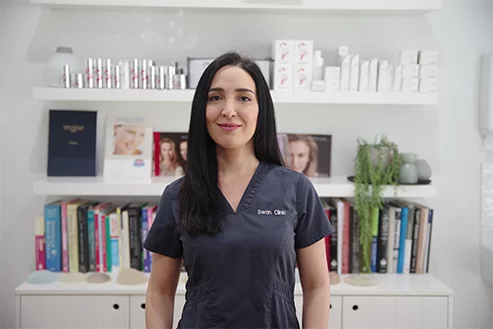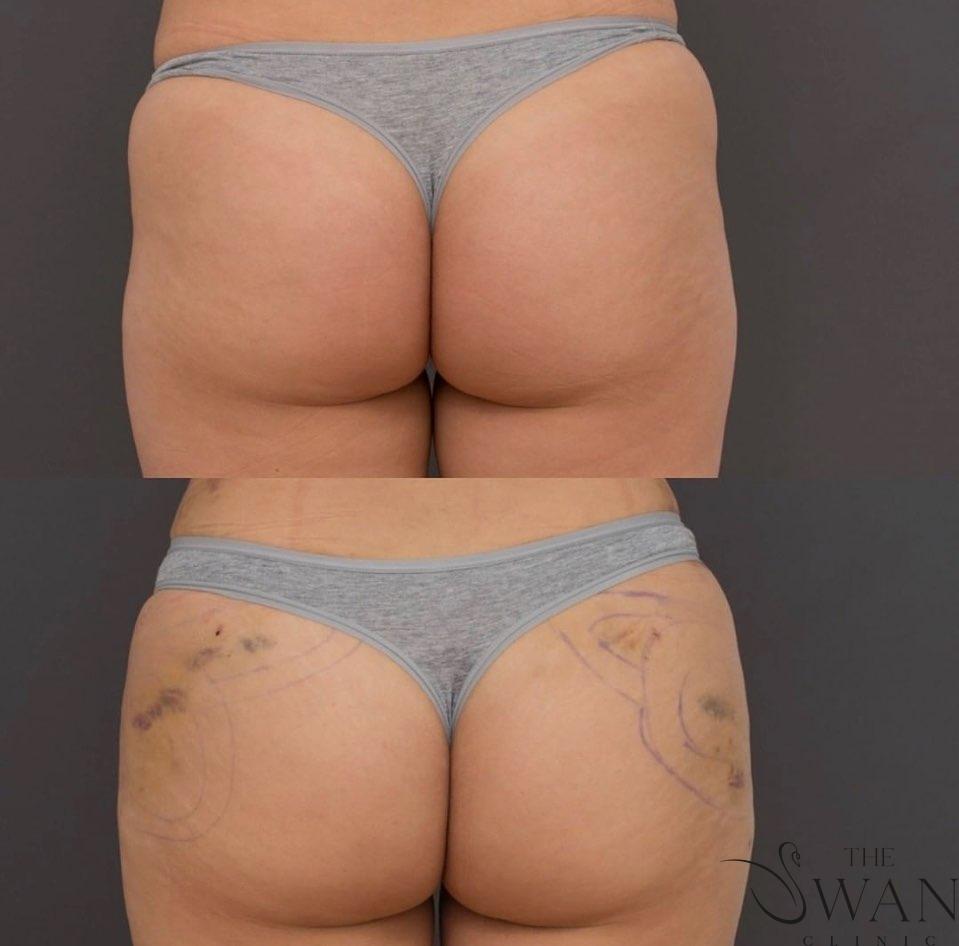VASER LIPOSUCTION
VASER (Vibration Amplification of Sound Energy at Resonance) liposuction is a surgical technique that uses ultrasonic energy to target fat cells while aiming to preserve surrounding tissues, including nerves, blood vessels, and connective tissue. The procedure involves using ultrasound to loosen fat, followed by suction to remove it.
Because the technique allows for more selective fat removal, it may reduce trauma to nearby structures and lead to less post‑operative swelling compared to some more traditional liposuction methods.
How the Procedure Works
- Anesthesia: Performed under general or local anaesthesia (depending on area and patient factors).
- Tumescent Fluid: A fluid mixture is applied to help numb the area, reduce bleeding, and assist in fat separation.
- Ultrasonic Emulsification: Fat is loosened through ultrasound waves from a small probe inserted via small incisions.
- Fat Removal: A suction cannula is used to remove the emulsified fat.
- Incision Closure & Support: Incisions are closed; a compression garment is typically used afterward to help support the area and reduce swelling.
Recovery and Aftercare – Liposuction / VASER Liposuction
- Swelling and bruising are common in the treated areas and may persist for several weeks. These effects typically improve gradually.
- Mild to moderate discomfort or tenderness is expected and can usually be managed with prescribed or over-the-counter pain relief.
- A compression garment is typically recommended for several weeks to help support healing, reduce swelling, and minimise fluid accumulation.
- Ice packs may be used during the early recovery phase if advised by your surgeon, particularly to help manage discomfort or swelling.
- Strenuous activity, heavy lifting, or intense exercise should be avoided for at least 2-4 weeks, or until your surgeon advises it is safe to resume.
- Some patients may experience temporary changes in sensation (numbness or tingling), which generally resolve over time.
- Irregularities such as firmness, lumpiness, or asymmetry may occur temporarily during the healing phase and often improve as swelling settles.
- Smoking and alcohol should be avoided during recovery, as they may interfere with wound healing and increase the risk of complications.
- Final results may take several months to become apparent, as swelling subsides and tissues settle.
- Follow-up appointments are essential to monitor progress, assess healing, and identify any concerns early.
Possible Risks & Considerations – VASER Liposuction
As with any surgical procedure, VASER liposuction carries certain risks and potential complications. While many individuals recover without significant issues, it is important to understand that outcomes can vary and no procedure is without risk. Your suitability for this treatment will be assessed during consultation, and all decisions should be made based on a thorough understanding of the procedure and your individual circumstances.
Potential Risks – Liposuction / VASER Liposuction
As with all surgical procedures, liposuction (including VASER-assisted techniques) carries risks. These include general surgical risks as well as those specific to the VASER liposuction:
- Infection at the incision or treatment sites, which may require antibiotics or further intervention
- Bruising and swelling, which are common and usually temporary but may persist longer in some individuals
- Irregularities, such as firmness, lumpiness, dimpling, or surface changes in the skin or underlying tissue
- Changes in sensation, including temporary or permanent numbness, tingling, or hypersensitivity in the treated areas
- Scarring at incision sites – typically small but variable depending on individual healing
- Seroma formation (accumulation of fluid under the skin), which may require drainage
- Haematoma (collection of blood under the skin), which may need medical management
- Skin laxity especially if large volumes of fat are removed and skin elasticity is limited
- Fat embolism (rare but serious) – where fat enters the bloodstream and causes blockages in blood vessels
- Burns or thermal injury (rare) associated with ultrasound-assisted liposuction techniques such as VASER
- Anaesthetic-related risks, including allergic reactions or cardiovascular complications
If you have any questions or wish to discuss liposuction options, please contact our clinic to schedule a consultation with Dr Reema Hadi.
If you would like more information on Liposuction, you can visit the Australian Society of Plastic Surgery
Before and After Photos
Real patient results from our expert procedures


